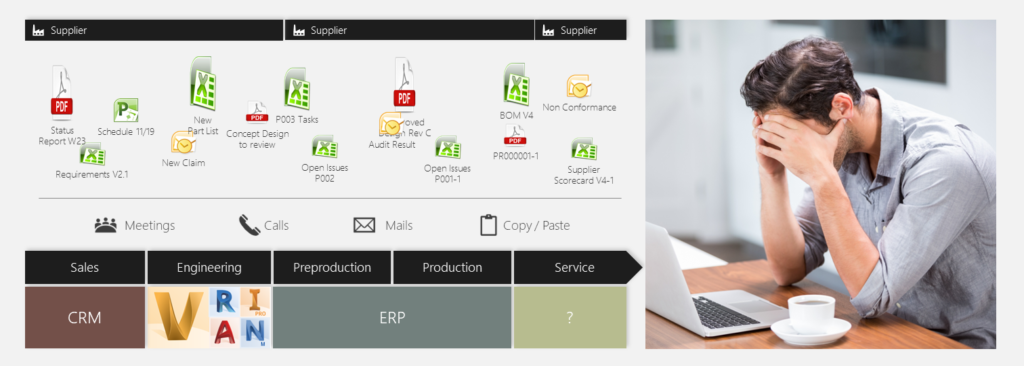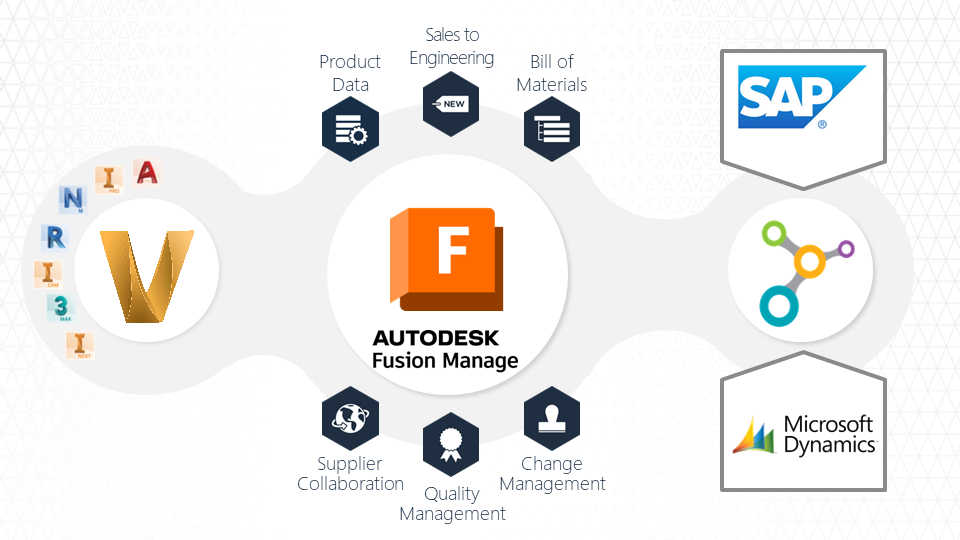
In today’s manufacturing industry, efficiency and accuracy are paramount. However, many manufacturers are still using outdated methods, such as spreadsheets and paper processes, to manage their product lifecycles. These methods are slow, error-prone, inflexible, and they can hinder a company’s ability to compete in a global market.
Product Lifecycle Management (PLM) software is a powerful tool that can help manufacturers overcome these challenges. PLM provides a single source of truth for all product data, from conception to end-of-life. This data can include product designs, bills of materials, engineering specifications, and more.
Drawbacks of Spreadsheets and Paper Processes
Prone to errors: Spreadsheets are error-prone, and even small mistakes can have a big impact on a product’s quality and cost. Paper processes are also susceptible to errors, such as lost or damaged documents.
Lack of collaboration: Spreadsheets and paper processes are often siloed, making it difficult for different teams to collaborate effectively. This can lead to communication breakdowns and delays.
Difficulty with version control: It can be difficult to track changes to spreadsheets and paper documents, which can lead to confusion and errors.
Security risks: Spreadsheets and paper documents are not secure, and they can be easily lost, stolen, or damaged.
Time-consuming: Manually entering and updating data in spreadsheets and paper documents is time-consuming and inefficient.

Benefits of PLM
Improved accuracy: PLM helps to ensure that all product data is accurate and up-to-date. This can help to reduce errors and improve product quality.
Enhanced collaboration: PLM provides a central repository for all product data, which makes it easy for different teams to collaborate effectively. This can lead to faster product development cycles and improved product quality.
Better version control: PLM tracks all changes to product data, making it easy to see who made what changes and when. This can help to prevent errors and ensure that everyone is working on the latest version of the data.
Increased security: PLM provides robust security features to protect product data from unauthorized access.
Reduced costs: PLM can help to reduce costs by streamlining product development processes and improving efficiency.

Spreadsheets and paper processes are no longer sufficient for the demands of today’s manufacturing industry. PLM software is a powerful tool that can help manufacturers improve accuracy, collaboration, version control, security, and efficiency. If you are serious about taking your manufacturing business to the next level, it is time to consider investing in PLM.
For more information on this blog post or if you have any other questions/requirements, please complete the below form:

